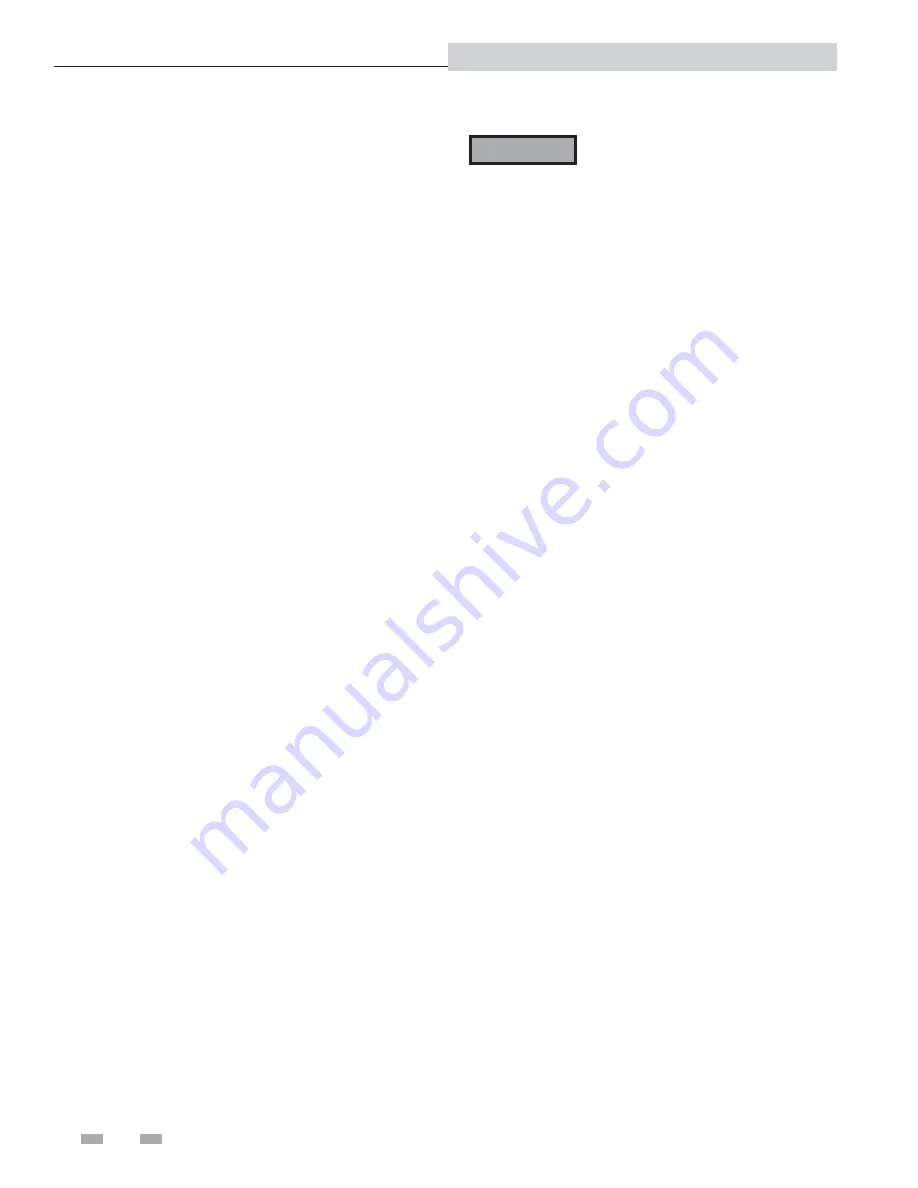
10
3
Operation
Hot Water Generator Installation and Operation Manual
After all installation procedures have been completed, and all
water, energy source joints, and power connections have been
double checked, the unit is ready for operation.
As a
precaution, it is strongly suggested that the following Startup
and Shutdown procedures be followed.
Startup procedure
1.
Assure that all manual shutoff valves on the water and
energy source lines are closed.
2.
Slowly open the manual shutoff valve on the cold water
inlet line, checking to assure that there are no leaks at the
valve or any joints. Allow the tank to fill with water. As
the tank is filling, hold the pressure relief valve open to
allow air to bleed out of the tank. This will speed the
filling process.
3.
Adjust the operating temperature control to the desired
operating temperature.
4.
Set the high temperature limit thermostat at 10 to 15
degrees Fahrenheit (10°F to 15°F) above the desired
operating temperature.
5.
If the unit is so equipped, turn on the internal circulating
pump. The circulating pump will operate constantly as
long as power is supplied to the pump.
Shutoff valves are located on the inlet and/or outlet side
of the circulating pump line. These valves should be
opened before the pump is turned on. After the power to
the pump is turned on verify that the pump is working.
If the pump is an oil lubricated unit, verify proper oiling.
6.
Open the valve on the condensate drain line, or boiler
water return line.
7.
For steam to water controls, slowly open the manual
shutoff valve on the steam inlet. Create a load/demand
situation of approximately 10 to 25% of the system
design conditions.
As the valves are being opened,
check for leaks at the valves and all pipe joints.
8.
For water to water controls, slowly open the manual
shutoff valves on the boiler water inlet and outlet lines.
Create a load/demand situation of approximately 10 to
25% of the system design conditions. As the valves are
being opened, check for leaks at the valves and all pipe
joints. Open the bypass loop ball valve approximately
half way. Allow the system to push air out of the tube
bundle and the piping slowly.
Note:
It should be noted that when the control valve is closed
the boiler water will flow through the bypass loop. When the
valve is open, less water will “bypass”. Adjustment of the
bypass loop ball valve will be necessary to balance your
system. For initial installation the bypass valve should be
closed.
WARNING
Steam or boiler water present situations
that can be very dangerous because of the
high temperatures and pressures.
Use
common sense and follow all accepted and
recommended procedures when
performing installation, operation, and
maintenance procedures to avoid possible
injury or death.
9.
Turn on power to the rest of the electrically controlled
components of the unit (if equipped).
10. As the unit is initially heating the water, carefully
re-inspect cold water inlet, hot water outlet, steam inlet
(or boiler water inlet), and condensate return (or boiler
water return line) joints for signs of leakage.
11. As the unit approaches the desired operating
temperature, adjust the temperature control valve.
12. After the unit has reached operating temperature, re-
inspect all joints for signs of leakage. In addition, check
all gauges and controls to verify that the water
temperature and pressure, as well as energy source
pressure, are within design specifications.
13. The unit is now ready for normal operation.
Shutdown procedure
1.
Turn off all power to the circulating pump and/or electric
controls, if equipped.
2.
Close all valves in the steam inlet line (or boiler water
line).
3.
Relieve the pressure from the energy source line (steam or
boiler water), where possible.
4.
Close all remaining valves in the system in this order:
• the hot water outlet line;
• the cold water inlet line; and
• the condensate return line (or boiler water return line)
5.
After the system has cooled, drain the unit by opening
the tank drain valve and holding the pressure relief valve
in the open position. This will prevent the formation of
a vacuum and increase the drainage flow.
6.
Proceed with the required maintenance or repairs.
7.
After performing the required maintenance or repairs,
return the unit to operation by following the Startup
Procedure.
























